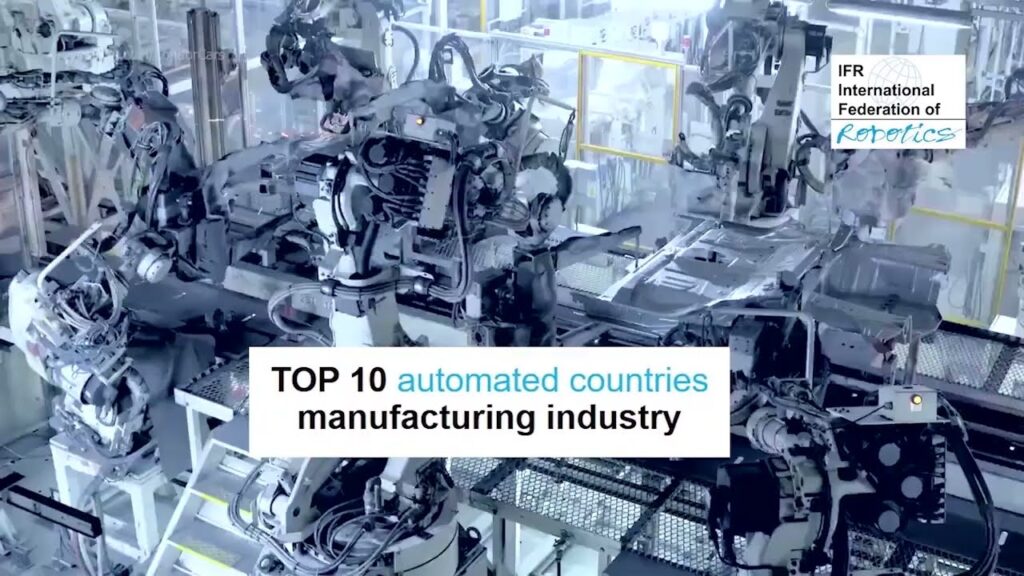# WorldRobotics: A Sneak Peek into the Future of Automation
Industrial Robots have become an integral part of modern-day manufacturing processes. With technological advancements reaching new heights, these highly efficient machines are revolutionizing industries around the world. In this article, we delve into the realm of industrial robotics and explore the incredible world of WorldRobotics.
According to the operational stock of 2021, industrial robots have witnessed a significant increase in deployment across various sectors. To gain deeper insights into this revolution, we will refer to two key sources – “Industrial Robots in Manufacturing” and “FACTS about INDUSTRIAL ROBOTS – Robot Density in 2021”.
## Explaining Robot Density
Robot density refers to the number of robots in operation per 10,000 employees in a specific industry or country. It is a crucial measure that indicates the level of automation within a sector or region. To get a better understanding, let’s dive into the top 10 countries with high robot density.
## The Top 10 Automated Giants
1. **South Korea**: Reigning at the top, South Korea boasts a staggering 1,584 industrial robots per 10,000 employees. The country has firmly established its dominance in sectors like automotive manufacturing, electronics, and metalworking.
2. **Singapore**: With an impressive 1,219 robots per 10,000 employees, Singapore is a global frontrunner in automation. The country’s focus on innovation and technology has fueled its economic growth and positioned it as a leading player in the global market.
3. **Germany**: Known for its precision engineering and advanced manufacturing processes, Germany holds the third position with 1,155 robots per 10,000 employees. German industries, such as automotive and machinery manufacturing, have embraced automation to boost productivity and maintain their competitive edge.
4. **Japan**: Japan, a pioneer in robotics, occupies the fourth spot with 1,071 robots per 10,000 employees. With a rich history of innovation in the field, Japan continues to push boundaries and explore new applications for industrial robots.
5. **Sweden**: Sweden boasts 702 robots per 10,000 employees, securing its place as an automation leader. The country’s commitment to sustainability and efficiency has led to significant advancements in the use of robots across multiple industries.
6. **Denmark**: With 658 robots per 10,000 employees, Denmark stands tall in the global automation landscape. The country’s expertise in industries like food processing, pharmaceuticals, and electronics has paved the way for increased robot density.
7. **Taiwan**: Taiwan’s robust electronics industry has contributed to its remarkable robot density of 648 robots per 10,000 employees. The country’s focus on high-tech manufacturing has propelled its ascent in the field of automation.
8. **United States**: The United States, with 300 robots per 10,000 employees, demonstrates its involvement in automation across diverse sectors. As a global powerhouse, the U.S. continues to invest in research and development, seeking to capitalize on the potential of industrial robotics.
9. **Italy**: With 273 robots per 10,000 employees, Italy maintains a strong presence in the global automated manufacturing landscape. The country’s expertise in automotive, fashion, and furniture industries has driven the adoption of robots as a means of enhancing productivity and efficiency.
10. **Spain**: Spain rounds up the top 10 list with 272 robots per 10,000 employees. The country’s automotive industry, along with its focus on renewable energy and smart cities, has propelled its integration of industrial robots.
## Paving the Way for a Robotic Future
The data from WorldRobotics provides a fascinating glimpse into the present and future of automation. As the proliferation of industrial robots continues, countries and industries must adapt to stay ahead of the curve. Let’s take a closer look at the implications of this robotic revolution.
Automation offers numerous advantages, including improved productivity, enhanced safety, and increased precision. Industrial robots can tirelessly perform repetitive tasks with unparalleled accuracy, reducing the risk of human error and improving overall efficiency.
However, it is crucial to strike a balance between human involvement and automation. While robots excel in repetitive tasks and heavy lifting, human creativity, problem-solving abilities, and emotional intelligence remain unparalleled. The integration of robots should be done thoughtfully to create a seamless synergy between humans and machines.
Investing in the upskilling and reskilling of the workforce becomes imperative in a world driven by robotics. As job roles evolve, there is a need for continuous learning and adapting to new technologies. Governments, educational institutions, and companies must work together to facilitate this transition and ensure that no worker is left behind.
Moreover, the use of industrial robots also brings ethical considerations to the forefront. Questions concerning job displacement, privacy, and the impact on society’s most vulnerable must be addressed comprehensively. A robust framework that strikes the right balance between progress and ethics is essential for a sustainable and inclusive future.
In conclusion, WorldRobotics provides an intriguing outlook on the current state of industrial robots and their density worldwide. The top 10 countries highlighted in this article exemplify the remarkable strides made in automation. Nonetheless, the journey towards a fully automated future must be approached mindfully, considering the societal, economic, and ethical implications. By leveraging the potential of industrial robots while prioritizing human welfare, we can shape a future that merges technological advancement with human ingenuity.
Industrial Robot
“Exploring the Impact of Industrial Robots: Robot Density in 2021 and Their Vital Role in Modern Manufacturing”


